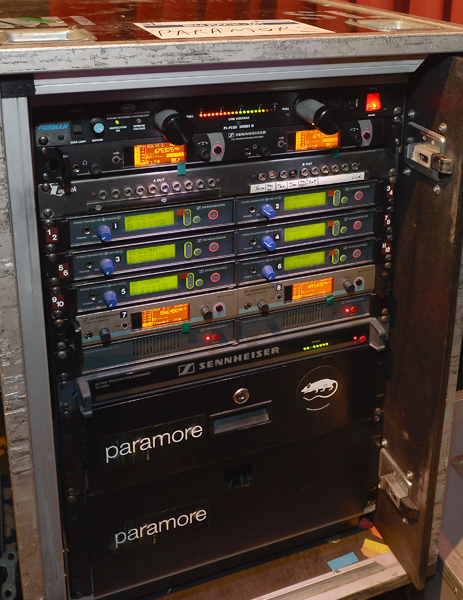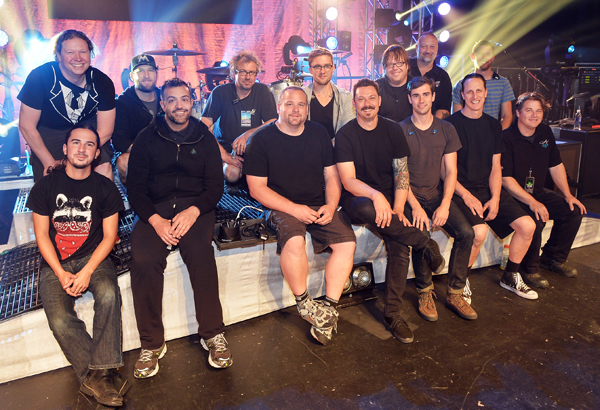
Making Room
Each of the three electric guitars plays to two cabinets. An sE Electronics Voodoo VR1 ribbon mic is mounted in the center of the cone of the “distorted” cab in each set, with a dynamic mic positioned slightly off axis to the cone of the “clean” cabs.
Shure SM7Bs are applied to the clean cabs of Taylor York and Jon Howard, while a Heil Sound PR-40 is the choice for Justin York.
In the band’s IEM mix, Bing emphasizes the feed from Taylor York’s SM7 on Justin York’s PR-40 – choices the band, being the “tone freaks” they are, prefer.
“They like that cut in their ears,” Mapp adds, “but I use the VR1s for the house. They sound huge and take EQ well. My thing is getting the guitars as big and in your face as possible, and a lot of that is EQing out a lot of the 2 kHz to 4 kHz range, then clearing up the low mid to make room for all three guitars.”
Mapp also deploys sE Electronics IRF Reflexion filters on the rear-firing cabs to help eliminate initial reflections when the stage is shallow and backed by a hard wall.
In speaking to both engineers, it’s clear that Paramore wants to hear everything their audiences do – from the crowd noise Bing mixes into their IEMs via a pair of Shure KSM 27 cardioid condensers positioned downstage left and right, to the often less than pristine vocals provided by the fans that Williams pulls up on stage.
“We use one of her backup mics for that,” Bing says, “and the band wants to hear it even if they’re screaming and off-pitch. I run that post fader so I can mix it in for everyone at the same time.”
Mapp also uses the feed from the KSM27s when recording the show to his JoeCo BlackBox BBR 64-MADI recorder, a recording that’s as useful a reference for him as it is for the band.

“I always love working with a band that cares about their tone and how that’s being delivered to the audience,” he says. “I’ve been fortunate that a lot of bands I’ve worked with get that. And this band really listens to their sound and to each other. Even with three electric guitars going at once they don’t step on each other.”
Sennheiser microphones are the universal choice for vocals, headlined by Williams’ SKM 2000 wireless mic custom painted with her orange signature color. Hardwired e935 microphones are posted for the background vocals of Justin York and Jon Howard.

In the overall sonic big picture, the key for Bing and Mapp is reflecting the level of attention the band pays to the sound they’re creating at the source by keeping their mixes well defined and clean on stage and in the house – a characteristic they also strive for when it comes to the actual stage setup, particularly downstage near Williams, York and Davis.
“It has to be a very clean stage because the three of them just go crazy,” Bing says. “We try to make it as safe as possible, because when Taylor’s in the right mood he’ll swing his guitar around, drag it on the floor and knock over drum kits.
“That makes for a good show, but when it comes to audio gear, he understands that if he breaks it, he’s bought it.”
Based in Toronto, Kevin Young is a freelance music and tech writer, professional musician and composer.

